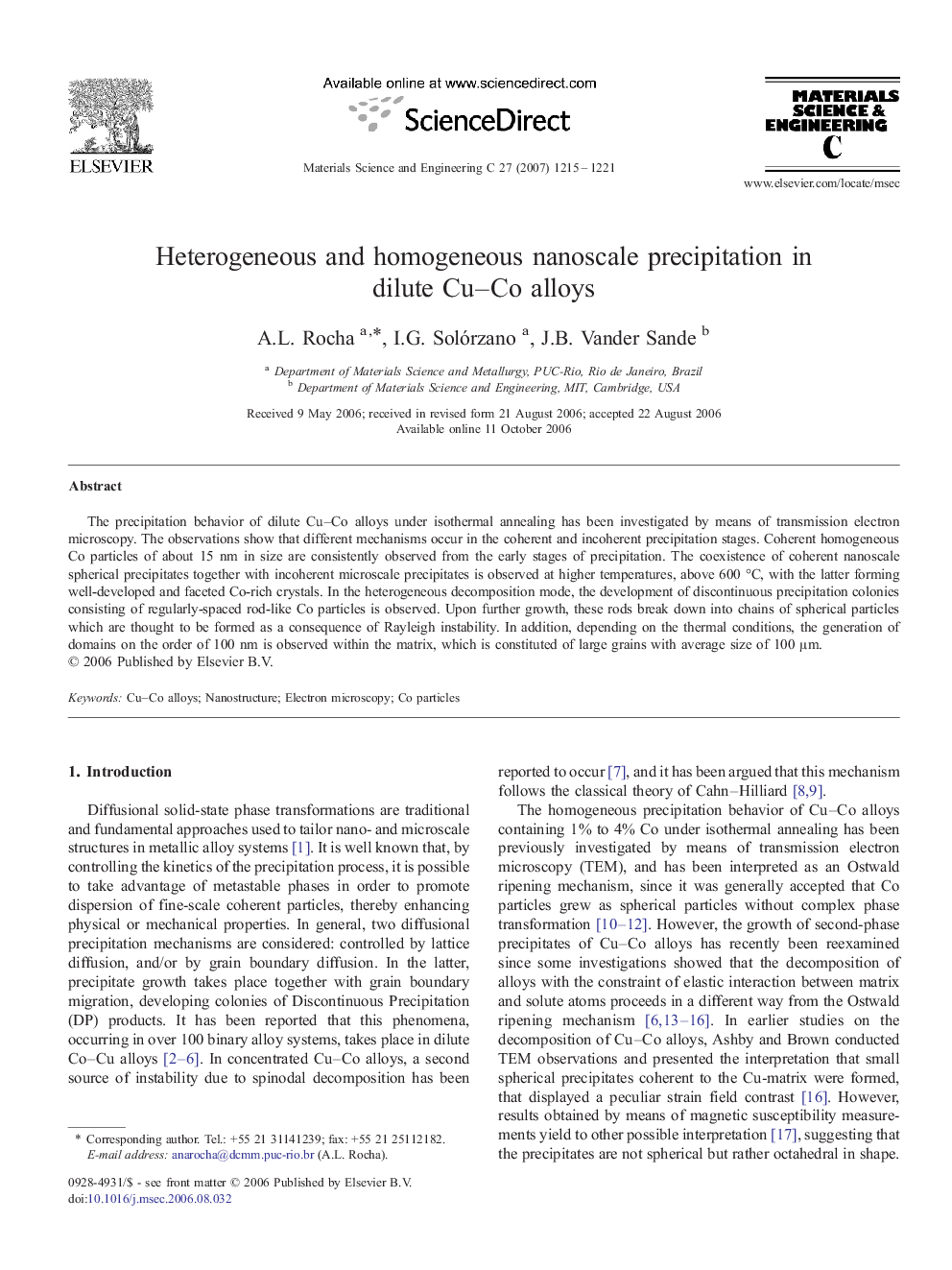| Article ID | Journal | Published Year | Pages | File Type |
|---|---|---|---|---|
| 7870831 | Materials Science and Engineering: C | 2007 | 7 Pages |
Abstract
The precipitation behavior of dilute Cu-Co alloys under isothermal annealing has been investigated by means of transmission electron microscopy. The observations show that different mechanisms occur in the coherent and incoherent precipitation stages. Coherent homogeneous Co particles of about 15 nm in size are consistently observed from the early stages of precipitation. The coexistence of coherent nanoscale spherical precipitates together with incoherent microscale precipitates is observed at higher temperatures, above 600 °C, with the latter forming well-developed and faceted Co-rich crystals. In the heterogeneous decomposition mode, the development of discontinuous precipitation colonies consisting of regularly-spaced rod-like Co particles is observed. Upon further growth, these rods break down into chains of spherical particles which are thought to be formed as a consequence of Rayleigh instability. In addition, depending on the thermal conditions, the generation of domains on the order of 100 nm is observed within the matrix, which is constituted of large grains with average size of 100 μm.
Related Topics
Physical Sciences and Engineering
Materials Science
Biomaterials
Authors
A.L. Rocha, I.G. Solórzano, J.B. Vander Sande,
